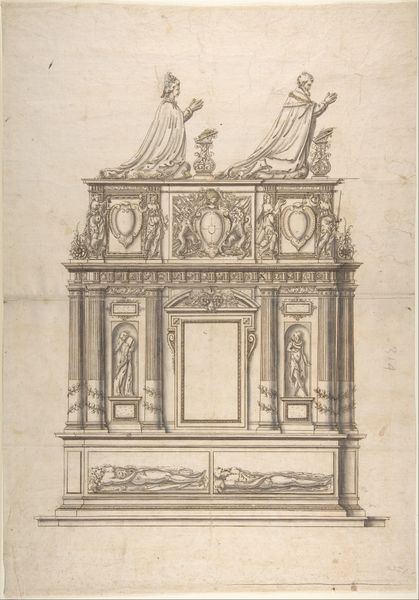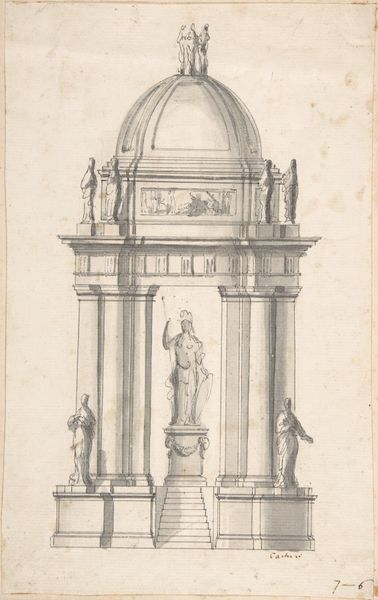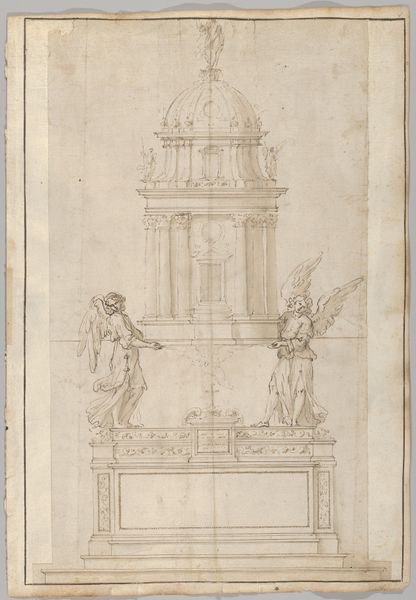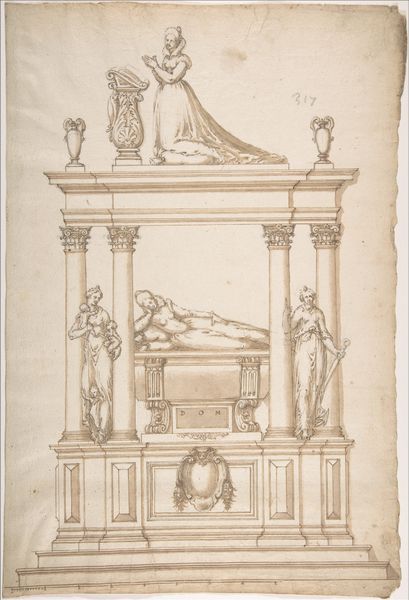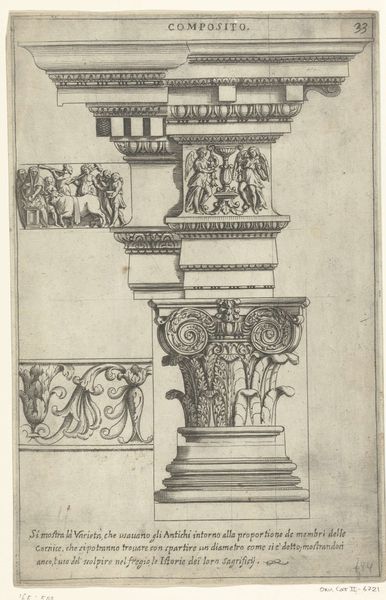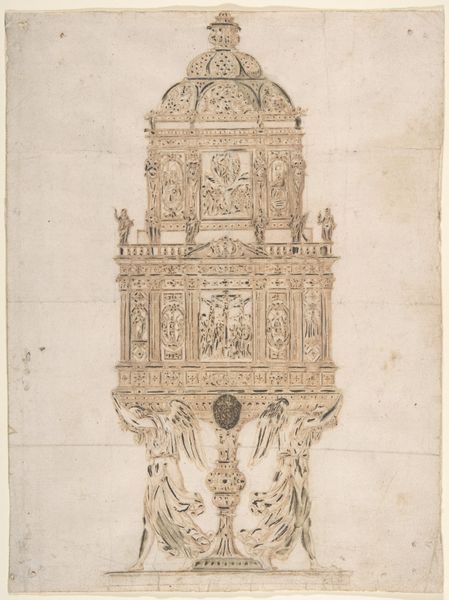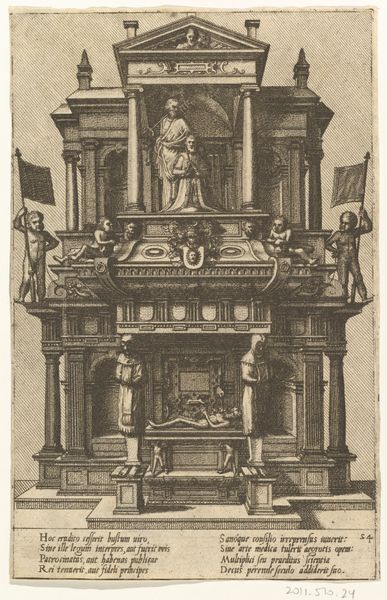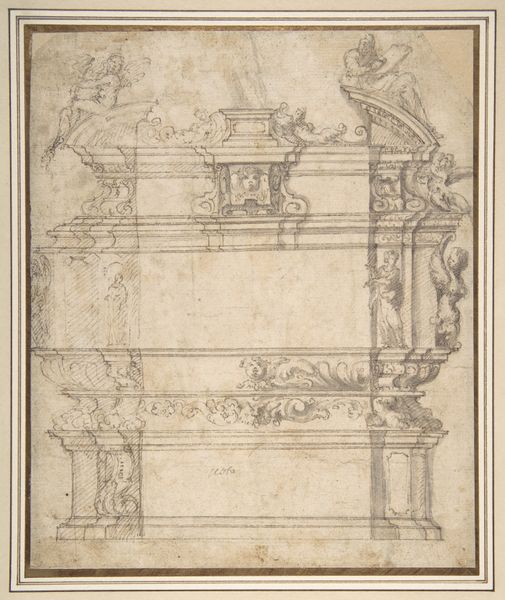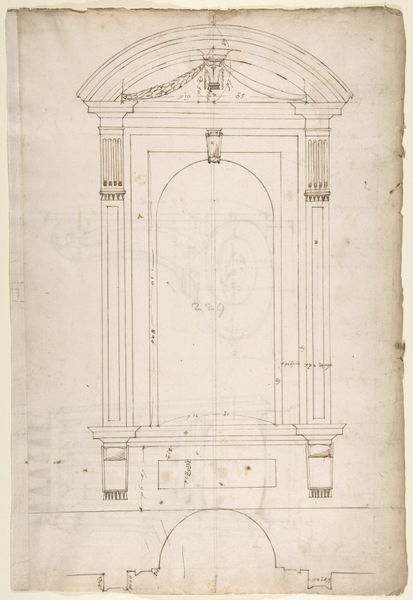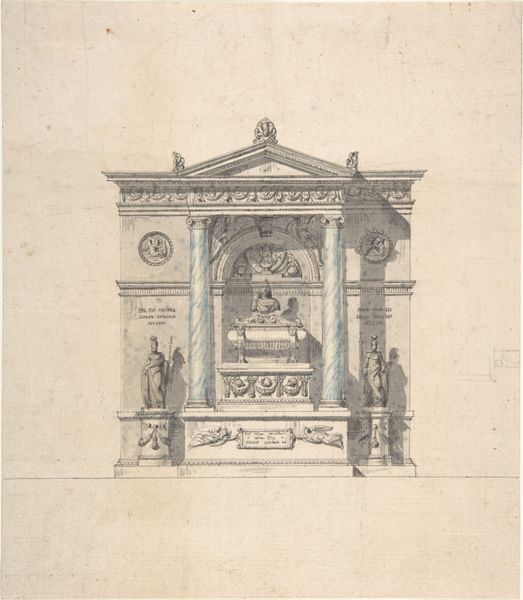
drawing, print, etching
#
drawing
#
baroque
# print
#
etching
#
human-figures
#
etching
#
figuration
#
history-painting
#
academic-art
Dimensions: 8-1/16 x 7-1/8 in
Copyright: Public Domain
Curator: Looking at this piece, I'm immediately struck by its austere grandeur; it exudes power even in its two-dimensionality. Editor: That's interesting. We are looking at what's titled "Design for an Altar," dating back to the 1700s. It is attributed to an anonymous artist, and we can see in the etched lines how the proposed altar would've stood imposingly. Curator: The symmetry, of course, enforces that sense of order, and it recalls a familiar archetypal form: the raised place of sacred ritual and sacrifice. The paired figures… are they representations of Virtues? They seem to carry symbolic items. Editor: Very astute. As for the semiotic dimension, this iconography of this drawing evokes classical themes—note how those objects are indeed associated with power and ceremony, but they also reference very specific virtues appropriate for a religious space, such as prudence or temperance. Curator: Indeed! You also can't escape the way the Baroque architectural style sought to embody divine will through lavish materials, theatrical designs and sweeping forms—this etching hints at that sensory, overwhelming aesthetic. How were these designs distributed? Editor: That's a good point. This kind of print may have served various functions, from proposals presented to patrons for commissioning altars, to a kind of catalogue reference material shared among workshops, to disseminate their design principles. Note the careful articulation and detailing in the composition's structure. Curator: A sort of flat-packed aesthetic ideology? But beyond its immediate cultural function, this representation embodies fundamental hopes within religious thought—order from chaos. The yearning towards transcendence, made visible through art. Editor: Precisely. Seeing the way form and function intertwine, especially through a historical lens, adds layers to understanding any work, wouldn't you agree? Curator: Absolutely! We witness an artist's intellectual fingerprint upon our cultural psyche, which is both fascinating and deeply humbling. Editor: For me, tracing the lineages of this design, observing its structure—that brings its own profound reward. It shows art's ability to communicate across epochs and disciplines, revealing enduring truths to curious viewers, then and now.
Comments
No comments
Be the first to comment and join the conversation on the ultimate creative platform.
